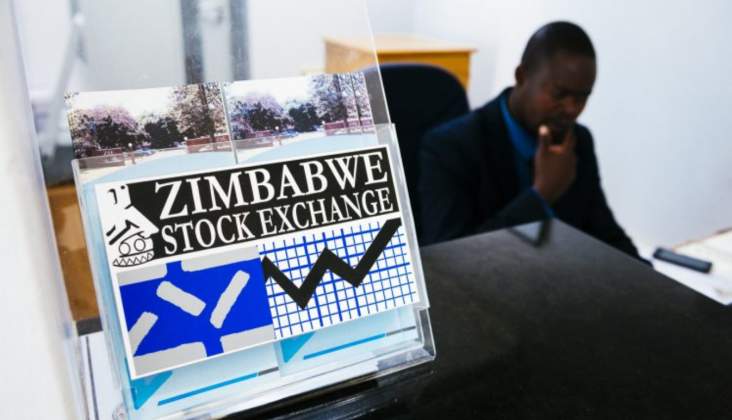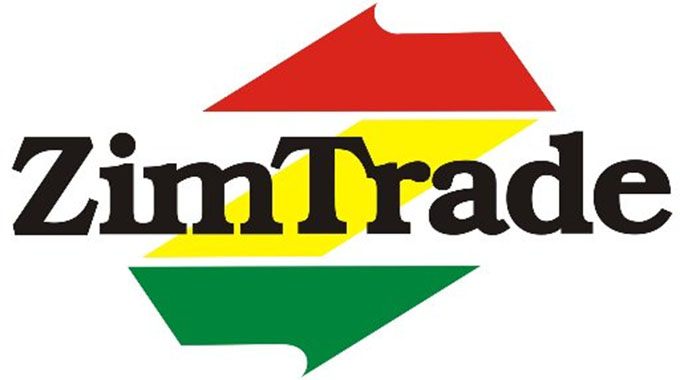Mthuli Ncube’s dramatic new currency flip-flops
GOVERNMENT was stampeded into seeking refuge in the resurrected Zimbabwean dollar — as an emergency — as it feared losing control of the financial levers of the economy through rapid re-dollarisation which was likely to result in failure to pay civil servants, particularly the military, in foreign currency as demanded, with dire consequences.
The return of the Zimdollar was hurried and mysteriously done amid a torrent of official rhetoric about the need for a sovereign currency to the extent that government structures and stakeholders were kept in the dark. Even cabinet seemed to be playing catch-up this week.
In a media briefing after this week’s cabinet meeting, Information minister Monica Mutsvangwa and her colleagues on Wednesday said: “Cabinet noted with satisfaction the decision taken by monetary authorities (not by itself) to abolish the multi-currency system and replace it with a mono-currency as contained in statutory instrument 142 of 2019”.
Government’s Tripartite Negotiating Forum partners — business and labour — were also caught by surprise. The same applies to another critical partner, the International Monetary Fund (IMF), which in April approved another Staff Monitored Programme (SMP).
IMF staff and the Zimbabwean authorities reached agreement on macroeconomic policies and structural reforms that could underpin a new SMP aimed at implementing a coherent set of policies to facilitate a return to macroeconomic stability before a local currency could be re-introduced.
Authorities’ shock currency reforms underlined Finance minister Mthuli Ncube’s dramatic somersaults on the issue over the past couple of months before and after he came into government. He has changed positions several times on the currency issue, including the day before he restored the Zimdollar. Government officials told the Zimbabwe Independent this week that the decision to revert to the Zimdollar in the absence of stable macro-economic fundamentals highlighted both an economic and political emergency.
“First, it was political decision to the extent that it was meant to stop government losing control of the social situation,” a senior government official said.
“Second, Mthuli admitted this although he explained it from an economic perspective. He said government had realised the economy was fast re-dollarising itself and it had to intervene. The issue is they had to intervene because if the economy re-dollarised civil servants and other workers were going to demand to be paid in US dollars which government and companies don’t have, and in the midst of this liquidity crisis there would have a disaster as public servants, including the military, risked not being paid.
“Third, it would it would have triggered civil unrest and protests, particularly because the exchange rate would have kept shifting and inflation rising rapidly.”
Government officials said that was why authorities had to act fast even though President Emmerosn Mnangagwa and Ncube had days and weeks before that been insisting macro-economic stability and production should be restored first before the Zimdollar returns. Even the IMF was of that view. The SMP, which will be monitored on a quarterly basis, in the first place is designed to implement a coherent set of policies that can facilitate a return to macroeconomic stability.
Successful SMP implementation would also have assisted in building a track record and facilitate Zimbabwe’s reengagement with the international community. The policy agenda to be monitored under the SMP is anchored on government’s Transitional Stabilisation Programme and emphasises fiscal consolidation, the elimination of central bank financing of the fiscal deficit, and adoption of reforms that allow market forces to drive the effective functioning of foreign exchange and other financial markets.
In addition, the agreed policies — both macro-economic and structural — were expected to remove critical distortions that have held back private sector growth and to improve governance.
From Page 1
The SMP also includes important safeguards to protect the country’s most vulnerable people.
Another senior official said Ncube had no choice but to change his position because last year when 85% of all transactions were done in quasi-local currencies — that is RTGS, mobile money, bond notes and bond coins — the political situation was controllable. Things changed this year, they said.
Official statistics show that broad money supply (M3) is over $10 billion. So last year about $8,5 billion transactions were in local quasi-currencies. The amount of currency in circulation is over $3 billion, which is largely electronic balances, bond notes and bond coins. There is about $540 million in bond notes and bond coins.
Government said this week after the abolishing of the multi-currency system, it would have to inject up to $1,5 billion in bond notes and coins to fill the gap, starting with $400 million which will be drip fed into the system as part of de-dollarisation.
“We will ensure that paper money and coins in circulation are within the best international practice of around 15% of broad money supply,” Reserve Bank of Zimbabwe governor John Mangudya told the Independent from China yesterday.
“Currently we have over US$500 million in circulation, but we will drip fed the market starting with $400 million.”
Officials say government’s fear of re-dollarisation and its consequences was behind the hasty Zimdollar return. Civil servants, particularly teachers and health professionals, were increasingly demanding payment in US dollars, citing the re-dollarisation of the economy and the rising cost of living and inflation which had rendered their salaries worthless.
“Government feared this would have ripple effects on the economy,” one official said. “This was occurring at a time government was worried by potential civil unrest as a result of the deteriorating economic situation characterised by escalating prices of basic commodities, while salaries are stagnant and failing in real terms. Government does not have enough forex to pay civil servants and was worried by the consequences, especially the failure to pay the army.”
Teachers, nurses and doctors had given government a strike notice. With rapid re-dollarisation, officials said, government was concerned about loss of control of the monetary policy, money supply and the financial levers of the economy, which could have left the country on auto-pilot.
Before his appointment in September 2018, Ncube was unequivocal that Zimbabwe should get rid of bond notes, which he called “bad money” and dollarise before bringing back the Zimbabwean dollar. He, however, vacillated as he struggled to juggle the government’s interest to keep quasi-local currencies and his plan amid the expectations he had created.
A check of Ncube’s views on currency shows he preferred the South African rand first. He then seemed to embrace re-dollarisation while rejecting bond notes. After months in government, he started talking about bringing back the Zimdollar — which he did this week, coming full circle on his theatrical currency flip-flops.
In a 2014 journal, Ncube argued Zimbabwe must adopt the rand. And then last year he said: “I was one of the people who were of the idea that Zimbabwe should adopt the rand and join the Rand Monetary Union for a seven to 10-year period. This is because South Africa accounts for 80% of Zimbabwe’s trade. So clearly you want a currency that is linked to your largest trading partner. But I don’t think I want to argue that now because things have moved on and we are at a new juncture.
“What I would argue now is that we remove the bond notes currency because it is becoming a surrogate currency to the Zimbabwean dollar without the macro-economic credibility to support it. The bond note currency is bad money and we know that in economics, bad money drives out good money. It’s not surprising that the US dollar is now in short supply because people are not banking them. So the immediate course of action is to remove the bond notes and then let the US dollar become the core currency but over time we have to bring back Zimbabwe’s domestic currency. That’s what will deal with liquidity issues in a big way.”
When Ncube arrived in Zimbabwe from his Switzerland base in September 2018, he spoke about macro-economic fundamentals, fiscal consolidation and monetary policy reforms, budgetary issues, debt, budget deficit, current account deficit, clearing of arrears with international financial institutions (IFIs) to secure new funding, lines of credit and currency reforms. On arrival he declared that bonds notes would be abolished by December, but his remarks sent the exchange rate skyrocketing on the parallel market.
While his ideas, eloquence and clarity were widely welcome, fiscal and monetary authorities, and business leaders, as well as the market were rattled. “I am very clear that there have to be currency reforms and the (current) currency approach is not working. In doing so, there are three choices that I will explore and pursue with urgency: One, adopt the US dollar only and remove the bond notes from circulation through a demonetisation process and also liberalise exchange controls,” Ncube said last September.
Secondly, he also said he was also considering joining the Rand Monetary Area as the move would close the gap in loss of competitiveness against Zimbabwe’s largest trading partner, South Africa. “Three, adopt a new Zimdollar, and here one needs to be clear that it has to be backed by adequate foreign reserves and macroeconomic conditions for its stability,” he said.
After that he, however, got reality check as fiscal and monetary authorities told him his three proposals were dead on arrival. Bond notes would not be removed without an alternative, official dollarisation was a non-starter due to US sanctions and the Zimdollar would be a disaster without macro-economic stability first, he was told.
In October, while addressing British think-tank Chatham House in London, Ncube admitted the bond note was not equal to the United States dollar, contradicting earlier government pronouncements on the currency. He then maintained government’s position that the US dollar was trading at par with the bond note when announcing the 2019 national budget statement in parliament last November.
In October last year, Mangudya reintroduced foreign currency accounts, separating them from electronic balances, but insisted the bond note remained at par with the greenback. This changed the situation, just like the managed exchange rate floating on February 20 this year, for good. There was no going back after that.
From then on Ncube started speaking inconsistently about the return of the Zimdollar until he brought it back on Monday — from nowhere.–theindependent.co.zw











